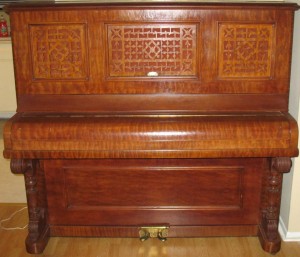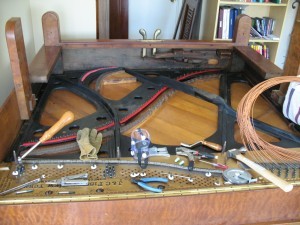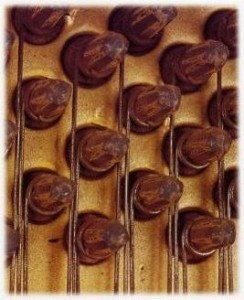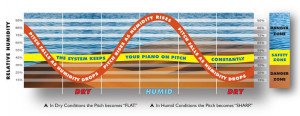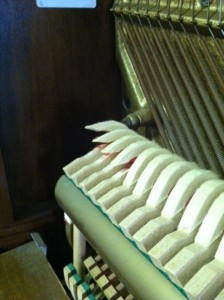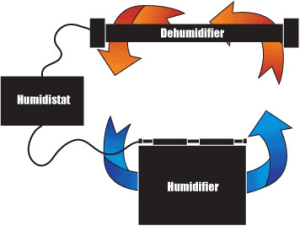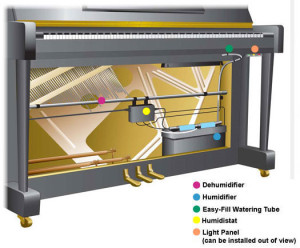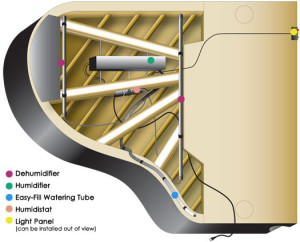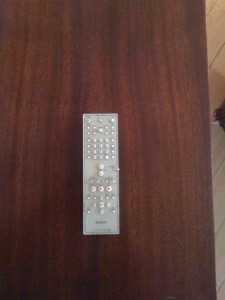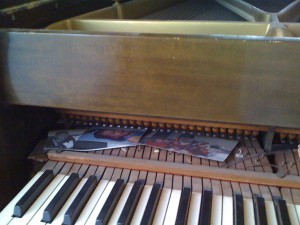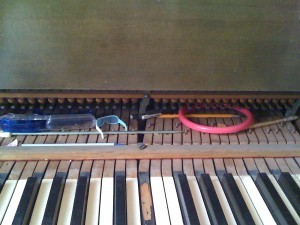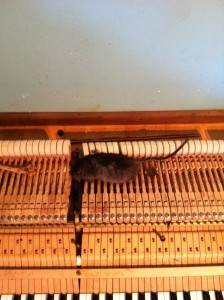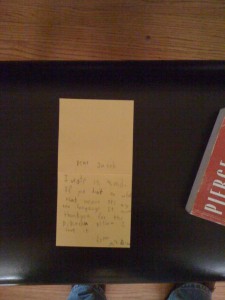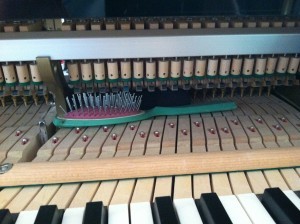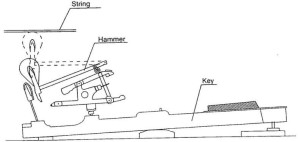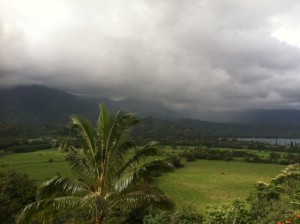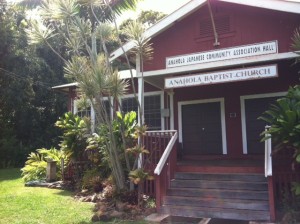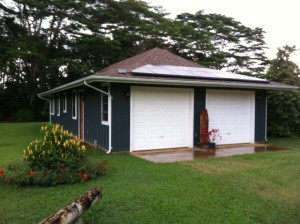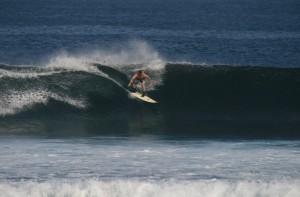What is Piano Regulation
For most piano owners, the term “regulation” is often shrouded in mystery. Their tuner may recommend a regulation to them, a fellow piano owner may mention it, or perhaps they may read about it on the web. I often receive inquiries about whether or not I can regulate someone’s piano. Typically, I find that the person inquiring is somewhat unclear about what they are asking for, and may be confusing regulation with tuning, or with minor repairs. The purpose of this article is to clarify what regulation is and why it is important.
Regulation involves taking every single moving part inside the piano and adjusting it so that the piano plays to the best of its mechanical and sonic abilities. Note I did not say adjusting it to meet factory specifications. Because the parts inside a piano way wear, expand, or contract over time, the optimal adjustment for your particular piano may not be the same as when you bought it.

Piano Tuning Tools
Sounds simple right? A turn of a screw here, a tweak there…what’s the big deal? The big deal is that there are eighty-eight keys, and for each key there are over twenty items that need to be regulated. That’s about 1800 so called “tweaks”. Realistically, it may be slightly less than that because some of the items don’t involve all 88 keys, like adjusting the pedals. Also, consider that some of these adjustments are pretty tedious, such as adjusting the key height, which involves sliding thin slips of paper as thin as 1/1000 of an inch underneath the key, one by one, until the perfect height is achieved. When it’s all said and done, the entire process takes between one and two full days. Mind you, the average tech could be tuning a lot of pianos during those two days.
That brings us to the next order of business, which is cost. This may vary substantially depending on the region, the technician, and the condition of the piano. A ballpark cost for regulation is around $500, give or take a few hundred. A piano that is in perfect condition may be a little less, while one that is in truly poor condition or is just very old may cost a lot more. Given the amount of time it takes and the improvement in the overall performance of the instrument, this is a nominal fee.
Here is a breakdown of the steps involved in regulation:
1) Positioning the letoff rail (the rail that causes each key to “let go” just before the hammer hits)
2) Straightening the damper lift rod (assures that each damper gets the same amount of “push” when you step on the damper pedal)
3) Traveling hammer butts (so the hammers are moving in a straight line)
4) Aligning the hammers to the strings (so each hammer strikes the strings dead on)
5) Aligning the jacks to the hammer butts (the jack is the little lever that physically pushes the hammer toward the strings)
6) Spacing and squaring the backchecks (the backchecks catch the hammer after it bounces off the strings. If misaligned, the hammer will “bobble” and make a weird noise)
7) Squaring and spacing the keys (so the keys look nice and straight, left to right)
8) Setting the hammer stroke (so the hammer is the perfect distance from the string. This affects how much power you get from hitting the key)
9) Regulating lost motion (how far you have to push the key before it actually starts moving the hammer)
10) Regulating key height (adjusting the average height of all the keys at once)
11) Leveling the white keys (so each individual white key is the same height)
12) Leveling the sharp keys (same as above)
13) Regulating hammer letoff (so the lever which pushes the hammer lets go at the right time. If not set right, the hammer won’t bounce off the strings)
14) Regulating white key dip (so when you push each key, it goes down the same amount as its neighbors)
15) Regulating hammer checking (so hammer will get properly “caught” after it bounces off the strings)
16) Regulating sharp key dip (so each black key goes down the same amount as its neighbors)
17) Regulating the sustaining pedal (so the dampers lift at just the right time)
18) Regulating the dampers to the lift rod (similar to above)
19) Regulating the damper spoons (similar to above, but this adjustment is made individually to each damper, rather than one global adjustment)
20) Regulating the soft pedal (so the soft setting is correct)
21) Regulating the bridle straps (mainly there to help when the piano is being serviced, but if incorrect could interfere with normal playing)
What will you gain from regulating your instrument? The number one thing you will gain is improved feel and playability, while eliminating many squeaks and extraneous noises that occur when hitting a key. It will also cause the sound of each note to be more even, especially in terms of loudness. Even a novice player can feel the difference in a run down 100 year old instrument, vs. a new piano. In an old piano, the keys feel like driving down a bumpy road. They are all slightly different heights. Some make noises, some don’t. On a new piano, every key feels perfectly identical. The height is the same. They look the same. They sound the same. Its much easier to fly through a fast passage on such a piano, in the same way its easier to drive fast on a smooth, straight highway.
What is not part of regulation? You might be thinking that such a long list must cover every part that could possibly be fixed on a piano, and therefore the piano will be like new. Actually, there are several repairs not included in this list because they are actual repairs, not just adjustments. The most common ones would be keytops, hammer filing, key bushing, and repinning. If your keytops are missing or broken, it will be tough to regulate all the other settings. That would need to be taken care of first. Similarly, if the hammers have deep grooves, are caked with mold, and are quite ragged, those also would need to be fixed prior to regulation. Small grooves in the hammers are OK. Deep grooves need to be filed. If your keys tend to wobble easily from side to side, that means the bushings are shot. The bushings are felt linings under the key so it can slide snugly up and down the pin. When the bushings are gone, the key can move willy nilly any direction it pleases. Regarding repinning, this is necessary when the moving parts aside from the keys tend to move from side to side, or the hammer makes a click when the key is pressed. Popping out each pin and putting in a new one is not an easy task, so its better to fix the ones that are problematic rather than doing them all.
Who should regulate? All piano owners should regulate their instrument about every ten years. However, if the piano is very inexpensive, that money might go better towards a new instrument. Spinet pianos should not be regulated. Proper regulation will keep the piano from aging and getting to an unplayable state. If you are a serious player, regulation is a must. It is only possible to get the maximum level of control and speed on an instrument that is fully regulated.


